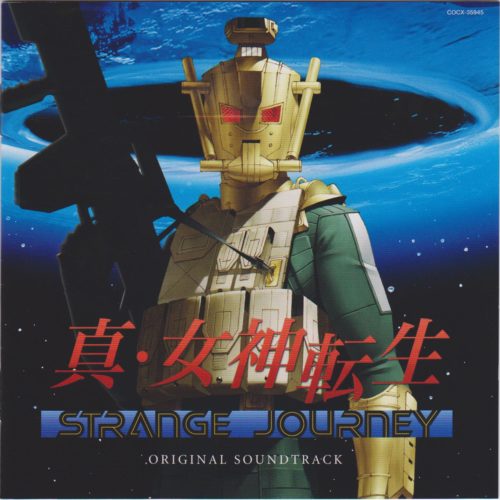Recommended Soundtracks: Shin Megami Tensei: Strange Journey

Shin Megami Tensei: Strange Journey is an anomaly within the mainline Shin Megami Tensei series and its spinoffs. It wasn’t the first non-numbered installment in the series, but it’s more of its own thing than Shin Megami Tensei: if…, the title that gave birth to the Persona series. Strange Journey is the only installment that doesn’t take place in Japan, but instead in Antarctica, where a team formed by the United Nations is tasked with investigating a mysterious aberration known as the Schwarzwelt. The game was inspired by several American movies, particularly The Thing (the 1982 remake) and Aliens, a welcome throwback to a time when Japanese games and anime inspired by western works were common.
In terms of gameplay, though, it was similar to the Megaten lineage in being a first-person dungeon crawler with turn-based battles. The exploration also took cues from the Etrian Odyssey games (a series I covered for last week’s Recommended Soundtracks post), though the concept of exploring zones based off the seven deadly sins was also used for if…

The soundtrack was one of SJ’s unique standout features, even by video game standards. Instead of simply reusing the same composition techniques from recent games and spinoffs at the time (it released in 2009), composer Shoji Meguro went with a distinct style that further separated this title from its predecessors and progeny, one that better fit the setting and theme.
Most of its tracks used a militaristic orchestral style made with a special synthesizer, which contained chanting from a Gregorian choir. Other tracks were meant to further enhance the environmental ambience, reminiscent of a movie soundtrack, a good fit considering the aforementioned inspirations. The soundtrack seemed puzzlingly different even for a game in the franchise at first, but the style of the tracks grows on the player as they’re venturing through a land that represents a hell on earth.
One track that best portrays the ambient and cinematic style is “The Beginning of the End,” which highlights the subtly tense mood early in the game. It would have been possible to mistake some tracks for using an actual orchestra if their quality was better, but the tracks needed to be streamlined for the handheld DS hardware. This track plays when the crew first discovers a semblance of the horrors that await them in the Schwarzwelt. The name of the track also means quite a bit, depending on which ending you take:
A good track that highlights how the Gregorian chants help the tracks that use them stick out is “The Fear of God,” the standard battle theme. This fast-paced track highlights the heightened sense of danger players feel while in battle, though it slows down just enough at certain points for the chants to stick out. It also becomes quieter to emphasize the mood, which especially works given how tough some of the game’s battles are. This is the only standard battle theme throughout the game, but it fits the mantra of being good enough that there doesn’t need to be another one:
“Sorrow” sticks out from the other tracks, as it’s one of the few where Meguro uses his old techniques. It relies mostly on piano use, a fitting track for when something tragic happens, though it’s not the only track used for that purpose given how “tragedy” and “Shin Megami Tensei” tend to go hand in hand:
https://www.youtube.com/watch?v=Atgm7H54SaA
Strange Journey recently received an enhanced port in the form of Shin Megami Tensei: Strange Journey Redux (or Deep Strange Journey in Japan) for 3DS, which added several new features. New tracks accompany many of its new scenes and battles, but they keep the same composition style. That’s despite how Meguro hasn’t used the style often in the eight years since the original SJ released, and some new tracks being composed by Toshiki Konishi. One of the new standout tracks is “The Great Sign,” new character Alex’s battle theme:
https://www.youtube.com/watch?v=s-Gdqkt-0qw
It’s a shame Meguro has only sparingly used the composition style relied on for this game since the original SJ released in ’09, but Redux isn’t the only sign that he (and perhaps other Atlus composers) might use it more in the near future. The track that accompanied Shigenori Soejima’s streamed artwork drawing for Project Re Fantasy when it was announced in 2016 wouldn’t have sounded out of place in SJ. There’s no sign as to whether he’ll use the Gregorian chanting again for some of the game’s tracks, but it would be a good idea.
It would also be nice if Atlus took a chance on making a game like SJ gain, though it currently doesn’t seem likely. SJ was always going to be a tough sell for the worldwide audience with the name “Shin Megami Tensei” attached to it, but another Megaten spinoff that doesn’t use the name or a brand-new IP could reach a larger audience. The mainline Megaten team is busy with Shin Megami Tensei V, but they, or another team, could handle a title like it if(…) there’s enough interest within and outside of the company.





